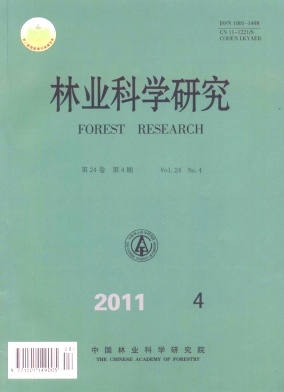|
[1]
|
刘方炎,李 昆,孙永玉,等.横断山区干热河谷气候及其对植被恢复的影响[J].长江流域资源与环境,2010,19(2):1386-1391
|
|
[2]
|
周 跃.元谋干热河谷植被的生态及其成因[J].生态学杂志,1987,6(5):39-43
|
|
[3]
|
金振洲,欧晓昆.元江、怒江、金沙江、澜沧江干热河谷植被[M].昆明:云南大学出版社,2000:8-12
|
|
[4]
|
孔艳菊,孙明高,魏海霞,等.土壤盐分及干旱胁迫对皂角幼苗生长和叶片保水力的影响[J].河北农业大学学报,2007,30(1):39-44
|
|
[5]
|
高俊凤.植物生理学实验指导[M] .北京:高等教育出版社,2006
|
|
[6]
|
李合生.植物生理生化实验原理和技术[M].高等教育出版社,2003:258-261
|
|
[7]
|
王玉魁,阎艳霞,余新晓,等. 干旱胁迫下灰白滨藜保护酶活性及抗旱生理特性研究[J].干旱区研究, 2010,24(10):122-126
|
|
[8]
|
黄成敏,何毓容.云南省元谋干热运河谷的土壤抗旱力评价[J].山地研究,1995,15(2):79-84
|
|
[9]
|
刘家琼. 我国沙漠中部地区主要不同生态类型植物的水分关系和旱生结构比较研究[J].植物学报,1987,29(6):662-673
|
|
[10]
|
Magan B.Hari srivastava and Chhail lal. Biornass plantation and farm forestry:choice of Eucalyptus species: Environmentalist versus foresters[J]. Indian Journal of Forestry,1989,12(4):247-254 |
|
[11]
|
杨 俊,马 健,王婷婷,等.5种荒漠植物抗旱性及其与抗旱指标相关性的定量评价[J].干旱区资源与环境,2009,23(6):143-146
|
|
[12]
|
井春喜,张怀刚,师生波,等.土壤水分胁迫对不同耐旱性春小麦品种叶片色素含量的影响[J]. 西北植物学报,2003,23(5):811-814
|
|
[13]
|
P.J.克累默尔著(汪振儒等译). 树木生理学[M]. 北京:科学出版社,1985
|
|
[14]
|
刘锦荣. 云南高原几种树木叶绿素含量的比较分析[J].西南林学院学报,1989,9(1):14-19
|
|
[15]
|
P.金仕明著(文剑平等译).森林生态学[M]. 北京:中国林业出版社, 1992
|
|
[16]
|
徐莲珍,蔡 靖,姜在民,等. 水分胁迫对3种苗木叶片渗透调节物质与保护酶活性的影响[J]. 西北林学院学报,2008, 23(2): 12-16
|
|
[17]
|
史玉炜,王燕凌,李文兵,等. 水分胁迫对刚毛柽柳可溶性蛋白、可溶性糖和脯氨酸含量变化的影响[J].新疆农业大学学报,2007,30(2): 5-8
|
|
[18]
|
刘建新,赵国林.干旱胁迫下骆驼蓬抗氧化酶与渗透调节物质的变化[J].干旱地区农业研究,2005,23(5):127-131
|
|
[19]
|
杨明博,杨九艳.鄂尔多斯高原不同生境下中间锦鸡儿(Caragana davazameii)叶片的游离脯氨酸、丙二醛含量以及POD活性的变化[J]. 内蒙古农业大学学报:自然科学版,2005,36(2):192-196
|
|
[20]
|
曹仪植.水分胁迫下植物体内游离脯氨酸的累积及其ABA在其中的作用[J].植物生理学报, 1985,11(1):9-16
|
|
[21]
|
汤章城.植物对水分胁迫的反应和适应性(Ⅱ.植物对干旱的反应和适应性) [J].植物生理学通讯,1983 (4):1-7
|
|
[22]
|
Hanson A D,Nelesn C E,Everson E H.Evaluation of free proline accumulation as an index of drought resistance using two contrasting barely cultivation[J]. Crop sci,1977,17:720-726 |
|
[23]
|
LLahi L, Corffling K. Changes in abscisic acid and proline level in maize varieties of different drought resistance[J]. Physio plant, 1982,55:129-135 |





 DownLoad:
DownLoad: